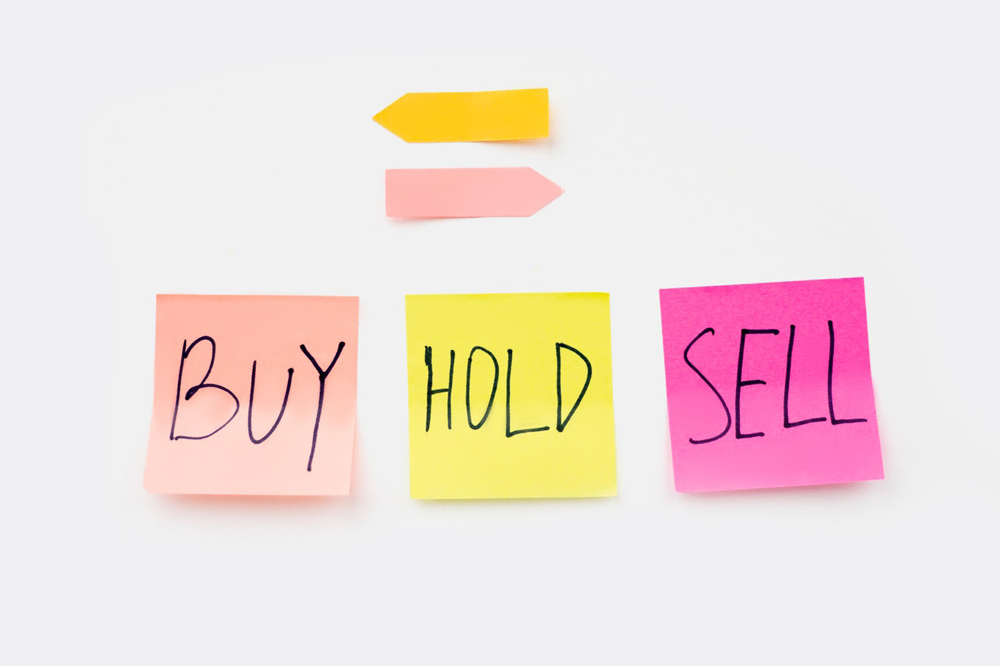If you’re looking for tools to help you gauge what direction crypto prices are going in, the Bitcoin fear and greed index has proven to be a hit.
This index bears similarities to the stock market fear and greed index and measures the two main emotions influencing an investor’s market decisions – fear and greed.
The crypto index is only available for Bitcoin and captures bullish and bearish trends by gauging investor sentiment for the world’s largest cryptocurrency.
The Current State Of The Crypto Market
The value of cryptocurrencies – especially Bitcoin – has grown exponentially in the past few years, largely due to its decentralised nature coupled with fast, secure, and efficient transactions.
The advent of the pandemic was another major contributor to the growth of crypto as a flurry of fresh investors flocked online to explore new investment opportunities.
Investors love the flexibility that cryptocurrencies offer, whether they are shopping online, sending funds abroad, or gambling at a casino.
While cryptocurrencies have soared in popularity as an investment class, investors need to understand that cryptos are inherently volatile, even more so than stocks or commodities.
Read on as we discover exactly what the Bitcoin fear and greed index is.
What Is The Bitcoin Fear and Greed Index?
The Bitcoin fear and greed index works similarly to the original stock market fear and greed index. In this instance, it’s used to gauge investor sentiments towards the crypto market.
This index identifies whether the crypto markets are bullish or bearish and is based on two opposing emotions – greed and fear.
Seasoned crypto enthusiasts will testify that investors are known to behave irrationally when extreme market conditions are present. In the crypto scene, investors typically become fearful when the market is depressed and can’t contain their greed when the market is ripe.
In a roundabout way, understanding the emotions of crypto investors will then present new investment opportunities to take advantage of.
How Did The Fear and Greed Index Originate?

CNNMoney initially created the fear and greed index as an indicator of the stock market.
They used a balanced approach to this method by assigning equal weights for its indicators. CNNMoney used seven indicators, each measuring different parts of the stock market’s behaviour at any given time. These include:
- junk bond demand
- market momentum
- market volatility
- put and call options
- safe-haven demand
- stock price breadth
- stock price strength
For the index calculations, CNNMoney observed how far each had deviated from its average compared to how far it usually deviated. These indicators are then scored on a scale of 0 to 100 to create the final index.
Higher scores indicate that investors appear to be more greedy at that time.
Who Created The Bitcoin Fear and Greed Index?
Alternative.me, a website that provides statistics and lists different software types and alternatives, created the Bitcoin Fear and Greed Index to determine how crypto assets perform.
Although it was only intended for Bitcoin, other crypto fear and greed index types will soon be added.
According to Alternative.me, the crypto market behaviour is very emotional. People tend to get greedy when the market rises, resulting in Fear of Missing Out (FOMO).
On the flip side, people are often fearful and sell their coins irrationally when the market swings.
The site claims that with their bitcoin fear and greed index, they hope to save investors from making emotional overreactions and acting irrationally when calm is required.
How Does The Index Work?
The Bitcoin fear and greed index is updated every 8 hours at approximately 00.00, 08.00, and 16.00 UTC.
The index is on a scale of 0 to 100, where 0 represents extreme fear while 100 represents extreme greed.
A score of 50 would indicate neutral emotions, with investors being neither fearful nor greedy.
• Scores of 0 to 24 are classified as extreme fear
• Scores of 25 to 49 are classified as fear
• Scores of 50 is neutral
• Scores of 51 to 74 are classified as greed
• Scores of 75 to 100 are classified as unadulterated greed

Alternative.me highlights two assumptions based on investor sentiment:
- When investors become fearful, that will represent an excellent opportunity to buy.
- On the contrary, when investors become greedy, there’s a good chance that the market is due for a correction.
This sentiment is based on various sources of information, all of which are valued the same as the previous day to represent meaningful progress.
Each source has a unique weight assigned to it, representing the importance of estimating the market sentiment.
These Bitcoin fear and greed indicators are created from qualitative and quantitative measures.
Volatility (25%)
This indicator compares Bitcoin’s current volatility and maximum drawdown to its average values from the last 30 and 90 days.
In circumstances where there is a steep rise in volatility, that is a sign that the market is fearful.
Open interest is also taken into account, where open interest data from different exchanges are combined and then compared to historical data to analyse fearfulness or greediness in the market.
High open interest indicates a greedy market, while low open interest indicates a fearful market.
Market Momentum & Volume (25%)
This indicator combines Bitcoin’s existing market volume and momentum and then compares it to the average of the last 30 and 90 days.
When there appears to be a strong upward momentum, this is a clear sign of a bullish market.
Social Media (15%)
This indicator uses sentiment analysis gathered from likes, posts, and hashtags on social media platforms.
Tweets, Reddit posts, and comments mentioning Bitcoin are studied to understand investors’ thoughts.
Bullish posts are thought to indicate a greedy market, while bearish posts are thought to indicate a fearful market.
If the measured interactions have a steep increase in a short period, that is a sign that the market may be too greedy.
Dominance (10%)
This indicator measures the amount of market capitalisation that Bitcoin takes up from the whole crypto market capitalisation share.
When Bitcoin’s dominance appears to be larger, there is less speculation for altcoins – a clear sign that indicates bearishness amongst investors.
When Bitcoin’s dominance shrinks, it is a sign that people are getting more greedy and choosing to invest in riskier altcoins to fill their pockets.

Trends (10%)
This indicator observes Google search trends for Bitcoin-related terms. It considers search volumes and recommendations that are pulled from popular websites.
Surveys (15%)
With this indicator, weekly surveys were conducted on a polling platform to gather the thoughts of individuals regarding the markets.
As much as 3,000 votes were received for each poll to gather a fair evaluation of market sentiment. These surveys were conducted in collaboration with strawpoll.com, a subsidiary of Alternative.me, but these surveys are currently on hold.
Each of the above indicators comprises market momentum and volatility scores, while the rest reflects qualitative scores.
While the Bitcoin fear and greed index differs from the original index, both have a common thread: it measures investors’ emotions towards the markets.
These indexes have some limitations and aren’t 100% accurate as they primarily demonstrate public sentiment towards Bitcoin. While indicators may say or suggest one thing, investors must research and come to reasonable investment conclusions.
Both the equity and crypto markets are volatile so that no single measure can be used as an accurate indicator.
Investors should always use a holistic combination of market factors before decision-making.
With that in mind, investors appear to have plenty of confidence to use the Bitcoin fear and greed Index to help them understand how the crypto market is performing.
Current State Of Bitcoin’s Fear and Greed Index
At the time of writing, the index was sitting in a neutral zone after a prolonged period of hovering in the negative zone.
Bitcoin has underperformed in the last week after reaching fantastic highs at the beginning of December. Currently, it’s trading at around $50,000.
It appears that the index is closing in on the neutral level of 50/100, and all eyes will be fixed on that as we approach 2022.
On December 4, Bitcoin suffered from its worst day of trading since May 2021 as its price plummeted to a two-month low of around $42,000.

With a massive $16,000 crash in under 24 hours, this dramatic fall sent investors into a tailspin with a demoralised investor sentiment. Bitcoin’s fear and greed index understandably went into the extreme fear category, sparking scenes of virtual frenzy.
Omnicron
It is thought that this drastic fall from grace for Bitcoin was due to the new COVID-19 variant, Omicron, which set the world on high alert, harming most financial markets in the process.
While Bitcoin’s price is very attractive for new investors, many wonders if it’s time to buy the dip.
While extreme fear might be on the index, this shouldn’t discourage investors from entering the market. On the contrary, many experts believe it is a great time to buy Bitcoin.
As billionaire Warren Buffet once said, “Investors should be greedy when the crowd is fearful.”
El Salvador
Self-proclaimed Bitcoin president and head of state of El Salvador, Nayib Bukele, certainly has high hopes. The Latin American country recently made history by becoming the first to adopt Bitcoin as a legal tender.
Buying the dip is very much part of the country’s plans to stimulate its ailing economy. That’s precisely what the EL Salvadorian president did, buying more than 150 Bitcoins at an average of $48,500 a few days ago.
Investors could certainly take a leaf out of President Bukele’s book to understand the Bitcoin fear and greed index – remain calm and don’t act irrationally.
Countries like El Salvador have embraced Bitcoin’s volatility and, as such, are not fearful when turbulent times arrive. Instead, they heed Warren Buffet’s advice and strike while the crypto iron is hot.
Market analysts anticipate that Bitcoin’s price could top $100,000 by the end of 2021 – a remarkable turnaround if that does happen.
The total cryptocurrency market cap has dropped below the $3 trillion level – currently around $2.3 trillion but could recover once the market overcomes this latest round of bearish sentiment.
How Do Investors Overcome Fear and Greed?

For investors, the best way to overcome fear and greed in trading is to create a trading plan and stick with it – consistency is key.
Once investors have a plan of action, they can prevent impulsive and irrational decision-making.
Investors are encouraged to keep a journal to track their investment journey and should use established platforms to get a holistic view of the market.
Having a plan will give investors some element of control and go a long way in helping them to navigate through choppy crypto waters.
Final Thoughts
While investing in cryptocurrencies can be quite an exhilarating experience, wild market swings can turn investors into an emotional wreck that can cause them to make decisions they may regret later.
Investors need to remember that while Bitcoin’s fear and greed Index is a terrific tool to guide investment decisions, it shouldn’t be the deciding factor.
Always make sure to do your research and gather your market sentiment before committing your funds to crypto investment. Good luck!
















